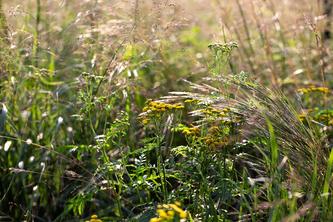
The University of Minnesota is a part of a multi-institutional effort to bring forward an innovative and free open-source software — Urban InVest — developed by the Natural Capital Project. Urban InVEST creates maps to assist city planners and developers to determine where investments in nature, such as parks and marshlands, can maximize benefits to people, like protection from flooding and improved health.
The researchers tested Urban InVEST by applying the software in multiple cities around the world, including Minneapolis, by working with local partners to understand priority questions. They published the case studies as part of a new paper about the software in Urban Sustainability and another in Landscape and Urban Planning assessing ecosystem services provided by golf courses. In Minneapolis, planners were deciding how to repurpose underused golf course land.
“In Minneapolis-St. Paul metro, golf revenue is declining. The downturn has created an appealing opportunity for private golf courses to sell off their land for development,” said Eric Lonsdorf, lead scientist for the Natural Capital Project at the University of Minnesota’s Institute on the Environment and coauthor. “To assist developers in deciding whether to create a new park or build a new neighborhood, we used Urban InVEST to show how, compared to golf courses, new parks could increase urban cooling, keep river waters clean, support bee pollinators and sustain dwindling pockets of biodiversity. New residential development, on the other hand, would increase temperatures, pollute freshwater and decrease habitat for bees and other biodiversity.”
Urban InVEST is the first-of-its-kind software for cities and allows for the combination of environmental data, like temperature patterns, with social demographics and economic data, like income levels. Users can input their city’s datasets into the software or access a diversity of open global data sources, from NASA satellites to local weather stations. The new software joins the Natural Capital Project’s existing InVEST software suite, a set of tools designed for experts to map and model the benefits that nature provides to people.
“This software helps design cities that are better for both people and nature,” said Anne Guerry, chief strategy officer and lead scientist at the Natural Capital Project. “Urban nature is a multitasking benefactor — the trees on your street can lower temperatures so your apartment is cooler on hot summer days. At the same time, they’re soaking up the carbon emissions that cause climate change, creating a free, accessible place to stay healthy through physical activity and just making your city a more pleasant place to be.”
Urban InVEST was applied in multiple cities around the world: Paris, France; Lausanne, Switzerland; Shenzhen and Guangzhou, China; and several U.S. cities, including San Francisco and Minneapolis. In many cases, the research team worked with local partners to understand priority questions and looked at reducing the overall temperature in cities, targeting nature inequities, and planning for greener futures with cities.
-30-
This work was funded by the Marianne and Marcus Wallenberg Foundation, the Gordon and Betty Moore Foundation, the LuEsther T. Mertz Charitable Trust, the Winslow Foundation, the United States Golf Association, the World Bank, FORMAS, the Chinese Academy of Sciences, the French Ministry, AgroParisTech, Nanyang Technological University and individual donors to the Stanford Natural Capital Project and the Center for Conservation Biology.
For the full scope of the project, read the Stanford University press release.





